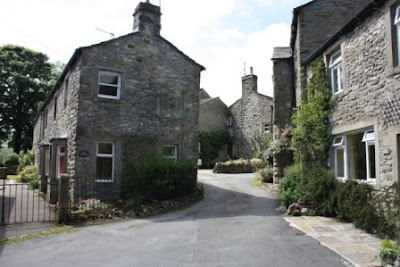 |
| A shop in The Shambles, York. |
Summer slowly crept up on us so that by the middle of May it was getting up over the 40degrees C mark. Time to think about the summer holidays which started on Friday 3rd July.
This year we decided it was time to go and catch up on our ancestry in England and visit a number of people we had got to know through Gail’s genealogy research and associated places.
Deciding to give Heathrow a miss we booked a return flight through Doha to Manchester, MAN. Spent 3 nights there with some friends we had made here in Abu Dhabi and their wee Aadam who was born in AD.
Leeds was the next stop to stay with David and Irene, some of Gail’s distant rellies who have been to NZ twice and stayed with us. A walk through the Chevin Forest was done with one eye on the clouds as rain was never far away for the 7 weeks we were in England and Scotland
We spend several days exploring the Yorkshire Moors and Dales as well as the history behind the abbeys of Rievaulx and Bolton. These were established in the 11 or 1200s and then sacked by Henry VIII whose forces came along to remove the lead from the rooves to let the rain in.
 |
| The 12th Century church at Leake, N Yorks. |
All that remains of a village that mysteriously disappeared in the 14th century. The bubonic plague swept this area although no record exists that this caused the inhabitants to disappear.

Rievaulx Abbey
Whilst in Yorkshire we had the pleasure of travelling to places associated with a young naval apprentice who learnt his trade under Captain Walker in Whitby. Later James Cook went on to explore the Pacific in the Endeavour which originally built as a collier in Whitby. He of course carried out the first detailed mapping of New Zealand with some of his charts being used until the last 50 years or so.

Kiwis in Whitby.

Statue of James Cook in Great Ayton, N Yorks.
He went to school here and was born nearby.

The village of Linton in Yorkshire
The first of many old stone bridges we saw in the UK.
This one in is Linton in Yorkshire
Tracing some of Gail’s ancestors in York, Scarborough, Filey and a number of other places was a little emotional at times especially when we found dozens of gravestones with the name Befwick and later the spelling changed to Beswick.
A week was never going to be enough to see the best of Yorkshire (in fact later we realised the same was to be true for most of the other counties), time dictated that we move on with our itinerary and head south and east towards Norfolk to catch up with Lord Nelson and eventually HMS Victory in Portsmouth. One of Gail’s ancestral uncles (Sam Sutton) was the first captain of the Victory and was captain again just before Trafalgar in 1805 before handing the ship over to Thomas Hardy as he went on sick leave. (If he had not have got sick, “kiss me Hardy” might have been ……………..different.)

The Norfolk Broads
We used Great Yarmouth as our base for our exploration as were fortunate to have Bob and Janet Walker from the Nelson Society as our guides for 3 days. The rain that we had experiencing on and off finally caught up with us big time in Wroxham on the Norfolk Broads after we had been to Burnham Thorpe, where Horatio was born.

The Lord Nelson in Burnham Thorpe.
The pub where Nelson ate the night before heading off to London to receive his orders from The Admiralty before heading to the Battle of Trafalgar.
This was erected in 1815, some what earlier than the more familiar column in Trafalgar Sq., London (1827)
After pottering about some small villages in Norfolk and Suffolk it was time to head towards London. A rental car around London, congestion charges, nowhere to park …. no way! Cambridge was where we dropped off the car - in the middle of a 2 hour horrendous thunderstorm and torrential downpour and headed to the capital by train.
Travelling by train the UK we heard was expensive, £32 for our tickets for a 45 minute trip. The car cost us slightly less that £20 incl. VAT for a day! Petrol was just over £1 per litre but both rentals we had did well over 40 mpg (distances are still measured in miles and yards on the roads in the UK).
London was as expected – crowded everywhere. Did a couple of shows, visited Greenwich, rode the London Eye, day trip to Windsor etc., etc. no photos to include here as you’ve seen them all before. A week in London was enough and a week’s Oyster Card for the tube and buses is the way to get around.
We headed out of London to Maidstone to pick up another car and continued on our merry way.










